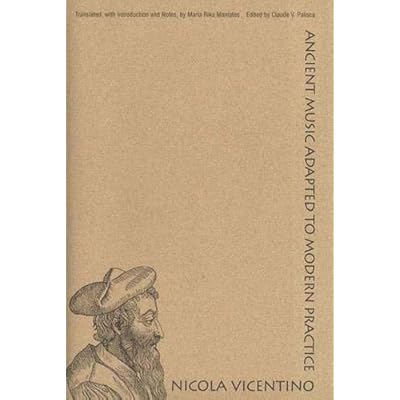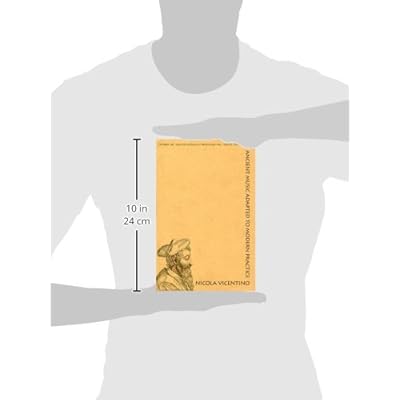Ancient Music Adapted to Modern Practice (Music Theory Translation Series)
Category: Books,Arts & Photography,Music
Ancient Music Adapted to Modern Practice (Music Theory Translation Series) Details
Language Notes Text: English (translation) Original Language: Italian Read more

Reviews
Well, I got a damaged copy cheap and am grateful. The TOC and most of the Intro are missing, but the main text is there.Vicentino's theory of microtonalism is one of the most bizarre and remarkable artifacts of 16th century music theory. However, it has many points of similarity to other period discussions of microtonal tuning adjustments as far back as Marchetto of Padua in the 14th century (who like Vicentino divided the whole step into five dieses), and to theories of irregular fretting on the lute or vihuela such as given in Juan Bermudo's Declaracion de Instrumentos (1555), and to the decades long arguments about inflection and intonation begun by Ramos de Pareja in 1482 and answered by Gaffurius and Pietro Aron.Also interesting are the points of similarity between Vicentino and Zarlino, both students of Adrian Willaert and inheritors of his archaic 15th century composition practice. I already knew that Vicentino and Zarlino had disagreed on various points, the surprise is that they agree on many more, mostly having to do with contrapuntal procedures taught by Willaert. There is a great deal of compositional theory in Vicentino's work which does not require microtonalism, and which parallels other period theory, but offers yet another point of view. It may be noted that Vicentino retained the 8 medieval modes, and did not endorse Glarean's 12-mode scheme as did Zarlino, but Vicentino also proposed 8 modes in the chromatic genus, and 8 modes in the enharmonic genus to complement the 8 diatonic modes.Another point of interest is the disagreement between Vicentino and his opponent Vicente Lusitano. Lusitano, far from being some conservative academic Pythagorean decrying modern folly, was another microtonal composer! Their disagreement was the splitting of a very fine hair, and it seems clear that Vicentino was pushing a dubious point in any case.Some people do actually build microtonal keyboards following the design of Vicentino's "archicembalo", which is described in detail here, and play them. (See You-tube.) These instruments could be varied or re-designed in many ways, but consist of two or more keyboards each with split black keys and tuned a comma apart, and one possibility is that the total tuning system results to 31-tone equal temperament. This system has incredible potential, and a great appeal for intellectual musicians, but suffers from the drawback that, being so rare, a common language using these harmonic tools never evolved. Vicentino would have liked this to be the case - in his text he frequently addresses the "students" who will study his work, and there is an echo of his practice in the music of Gesualdo, who was also associated with the court at Ferrara. However, it is clear that musicians who wish to make a living at music must (regrettably) relegate Vicentino's practice to hobby status, or be academics with a unique specialty.In spite of the fact that I will probably never seriously play any music in Vicentino's microtonal system, I do find it fascinating, and I also consider this a very valuable read for filling in my knowledge of the progressive trends of 16th century music theory.



